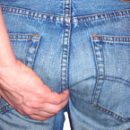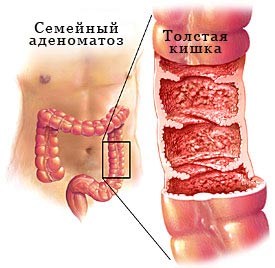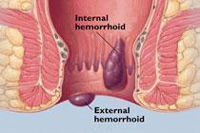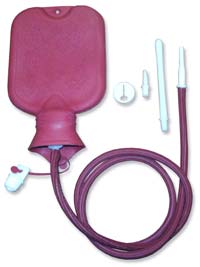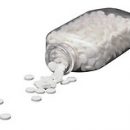If you have pain in the rear pass, increasing in defecation, a sense of discomfort, burning sensation, the feeling of the foreign body in the rectum, then maybe you cryptite. Learn more of this article.
Content
Inflammation of the posterior (anal) sinuses
Crypts are deepening, located all over the circumference of the rear passage at the border of it with the rectum. Since the crypts are blind pockets opened towards the direction of movement of the feces, they are the perfect "Trap" For particles of feces, microbes, dense and sharp small foreign bodies. Since neither the crypts themselves nor the anal glands and ducts are not equipped with a contracting device, they cannot free themselves from the contents of their contents or a traumatic foreign body and, ultimately, are inflamed and caught.
Causes The occurrence of inflammation of the rear-ground (anal) sinuses
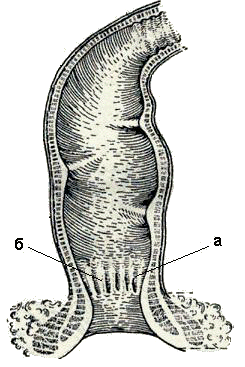 Interesting intestinal content in crypts — The phenomenon is completely normal, usually it empties well, and if the ducts of the anal glands are passable, their secret helps to create a barrier to penetrate the microbial flora in deeper layers.
Interesting intestinal content in crypts — The phenomenon is completely normal, usually it empties well, and if the ducts of the anal glands are passable, their secret helps to create a barrier to penetrate the microbial flora in deeper layers.
In some cases, the normal process can break.
Most often traumatization of the walls of the crypt is most often due to the firm components of the feces (bones, peel of seeds, bran pieces, bristles, etc.), poor drainage of the crypt (due to the firm lumps, the edema of the mucous membrane in diarrhea), as well as the obturation of the anal gland ducts.
So any violation of the emptying process of the rectum, any more minimal injury can lead to inflammatory changes in the crypt itself, and in violation of the anal glands, the blockage of their lumen, the inflammatory process can spread to the deeper layers of the intestinal wall and cause paraproxitis.
Manifestations
E inflammation of the posterior (anal) sinuses
The main manifestations of cryptite are pain in the rear pass, increasing during defecation, and a sense of discomfort, sometimes there are burning sensations, a feeling of foreign bodies in the rectum. The appearance of blood in the form of impurities to callers is also often. In the presence of purulent discharges, the itching of the perianal region is noted. Increasing body temperature, as a rule, is not marked.
If the sharp period is eliminated by the factor that led to the occurrence of illness, — Drainage of crypts and anal glands — Coming recovery. In some cases, the inflammatory process can spread to neighboring crypts and the overlying departments of the rectum. Most often, the process flows waves: inflammation in a crypt subsides, but under adverse conditions repeated again.
Complications for
Inflammation of rear-ground (anal) sinuses
If the crypt-abscess provided by independent flow or under the influence of conservative treatment is not revealed into the lumen of the rectum, the inflammatory process can spread to neighboring crypts, the possibility of the development of purulent proctitis is not excluded, but most often cryptite is complicated by the spread of infection deep into the exit to the cellular spaces, which is already is regarded as a sharp paraproxy.
In cases where Krypt-abscess empties into the intestinal lumen, but the drainage is insufficient or not eliminated factors that led to cryptite (constipation, microtravum due to long-term outdoor, the cracks of the rear pass, large hemorrhoidal nodes that violate crypt drainage, etc.), inflammation in crypt becomes chronic with periods of exacerbations. This can lead to a scar deformation of the Crypt itself, to the formation of an incomplete inner fistula of the rectum. During the spread of inflammation of neighboring crypts in some cases, a chronic inflammatory process goes according to the type of productive and then in the upper third of the anal channel, where the bottom crypt is located, a dense scar cloth is formed — Pactenosis. With pronounced Pactenosis, when the scar has a length of more than a quarter of the anal channel circle, the elasticity of the tissues and the ability to stretch during the passage of a hall lump, which leads to a violation of the emptying of the rectum.
Diagnostics
Inflammation of the posterior (anal) sinuses
After finding out the patient's complaints, the assessment of the general condition is carried out an outdoor inspection of the perineal area, the palpation of the perianal region, a thorough finger study of the anal channel, the region of the crypt and the distal portion of the rectum, ano- and rectoromanososcopy. This is — Mandatory patient survey. If necessary, research can be supplemented with ultrasonography (rectal sensor), proctographic, biopsy (if suspected a malignant process).
If the process is limited only by crypt, with an external examination of the rear pass, as a rule, changes are not noted. When a finger study of the walls of the anal canal in the upper third of it and with palpation in the region itself, local pain and pastosity are detected. Inspection through anoskop allows in some cases to detect swelling and hyperemia in the field of crypts, fibrin, sometimes when pressing from the crypt, a drop of pus may be distinguished. Sometimes when anoscopy can be seen against the background of hyperemia, a bright red point, which corresponds to the withdrawal flows of the anal glands. Unfortunately, during recto- and aososcopy, it is not always possible to see the bottom of the crypt.
RectorOnoscopy allows you to estimate the condition of the mucous membrane of the rectum and the distal sigmoid diver and eliminate other possible causes of pain and pathological discharge from the rear passage.
Treatment
Inflammation of the posterior (anal) sinuses
 Uncomplicated cryptite is treated conservative. A diet is assigned with the exception of salted, sharp, alcohol. Food should be quite voluminous to avoid the latency of the chair, low-fat and with good culinary processing. Laxatives should not be used, when constipation is better to clean the rectum using the enema. Reception of laxatives leads to the dilution of intestinal contents, a multi-merating act of defecation, which contributes to the irritation and edema of the mucous membrane of the rectum.
Uncomplicated cryptite is treated conservative. A diet is assigned with the exception of salted, sharp, alcohol. Food should be quite voluminous to avoid the latency of the chair, low-fat and with good culinary processing. Laxatives should not be used, when constipation is better to clean the rectum using the enema. Reception of laxatives leads to the dilution of intestinal contents, a multi-merating act of defecation, which contributes to the irritation and edema of the mucous membrane of the rectum.
It is necessary to carefully perform hygiene measures: seating baths with a potassium permanganate slurry solution with water temperature 37—38 °From 10—15 min, mandatory arms of the region of the rear pass after defecation, for the night for 7—10 days microclisms 30—40 ml with 0.3% collargol solution. Rectal candles are prescribed.
In case of unsuccessful conservative treatment, complications usually arise in the form of acute paraproctitis or an incomplete twist of the rectum is formed. And in the same case treatment surgical. Surgical treatment is shown and in chronic cryptite. Gabriel's operation is carried out with simultaneous excision of the papilla and crypt to be. Gabriel's operation is a complete excision of the rear passage crack with a triangular skin area surrounding the crack.
Forecast with acute crying in case of emptying crypt-abscess into the intestinal lumen is favorable. It is important to eliminate all factors provoking repeated inflammation or the transition of a sharp process into chronic. The need for a timely and correct treatment of acute cryptite emphasize such statements: «The source of almost all infectious diseases of the perianal and anorectal zone is the affected crypt», Cryptite can be called «the greatest little disease in proctology».


